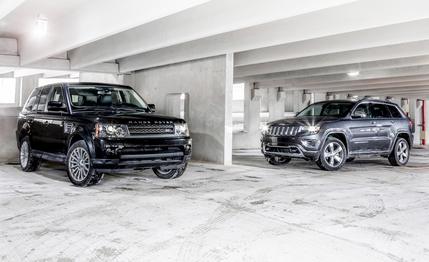
 Comparison Tests
Comparison Tests
To paraphrase Oscar Wilde, Jeep and Land Rover really have everything in common nowadays except, of course, design language. Since the ’40s, these flag-draped off-road icons have stuck to what they know best: building super-capable two-box utilities. The Range Rover Sport is Land Rover’s bestseller; the Grand Cherokee is the bestselling Jeep.
The similarities run even deeper between a 2010 Range Rover Sport HSE, such as this 28,000-mile example loaned to us by Platinum Motorcars of Troy, Michigan, and a brand-new Grand Cherokee 4x4 Overland. This almost fully loaded Jeep retails for $47,190—within $1000 of what the Range Rover trades for on used-car lots. Both feature two-speed transfer cases, multi-mode stability controls, height-adjustable air springs, heated steering wheels, and leather-wrapped dashboards and interior trimmings. They are equally capable of tackling tough two-tracks, but they’re more likely to be assaulted by messy toddlers and city potholes.
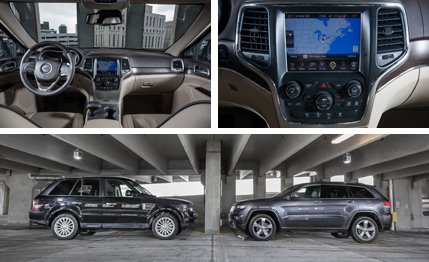
 Top: In second-best Overland trim, the Jeep Grand Cherokee is arguably nicer than the Range Rover Sport inside. Also, its shifter sinks putts.
Top: In second-best Overland trim, the Jeep Grand Cherokee is arguably nicer than the Range Rover Sport inside. Also, its shifter sinks putts.
Differences in hardware are largely confined to the engine compartments. Our Grand Cherokee was fitted with a 290-hp, 3.6-liter V-6 and an eight-speed automatic, which is seemingly overmatched by the 375-hp, 5.0-liter V-8 and six-speed auto in the Sport. But, despite its horsepower advantage and 115-lb-ft superiority in torque, the Rover doesn’t feel noticeably quicker than the Jeep. Attribute that to the Grand Cherokee’s two extra cogs and significantly lower weight. Perhaps more important when considering these two-and-a-half-ton monsters is that the Grand Cherokee is rated at 19 mpg combined by the EPA, a nearly 30-percent improvement over the Rover. And the Grand Cherokee burns regular fuel while the Sport requires premium.
With 28,000 miles on the odometer, the Range Rover Sport feels every bit as fresh as the Grand Cherokee, minus the new-car smell. The V-8 seems hairier of chest than the V-6, though shifts—through both ZF transmissions—are equally tidy. The Sport’s high seating position and thin A-pillars provide great visibility that’s absent in the Jeep. Neither SUV merits much praise for on-road dynamics, though the pure hydraulic steering assist in the Rover is noticeably heftier than the electrohydraulic helm in the Jeep. Both are smooth cruisers on the highway, delivering on their luxury promises.
The four-year difference in age shows how quickly infotainment systems have advanced. The Overland comes with an 8.4-inch touch screen that integrates with your smartphone, whereas the Rover’s balky and slow five-inch touch screen seems like a first-generation Zune.
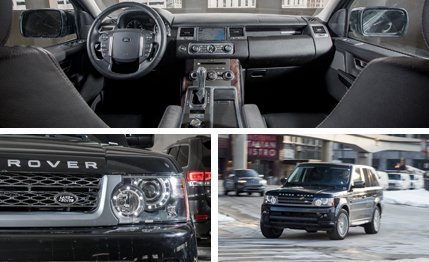
 In British cars, you get in and start looking for things that will snap off in your hand. The Sport maintains the illusion that most items won't.
In British cars, you get in and start looking for things that will snap off in your hand. The Sport maintains the illusion that most items won't.
There are no squeaks coming from the Rover’s body, surely a byproduct of a life lived on pavement, though Land Rover’s sorry reputation for reliability shouldn’t be ignored. There hasn’t been a single recall on the 2010 Range Rover Sport, but internet forums are littered with complaints ranging from electrical glitches to locking brakes. And right alongside them, praise for the improved reliability of the revamped 2010 over earlier Range Rover Sports.
So the choice in posh off-roaders comes down, as it so often does, to vanity. Dorian Grays will chafe at our choice, but we’d spend our money on a new Jeep with a full warranty and a very deluxe vibe.
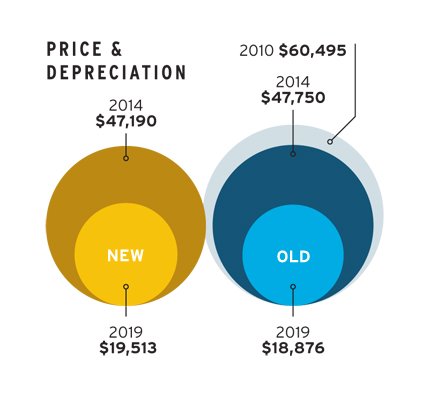

Parking-lot speed bumps are no trouble for this pair of off-roaders.
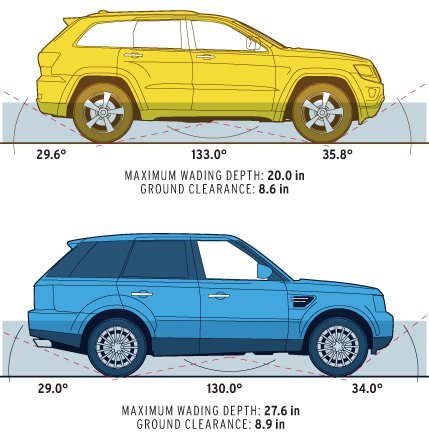

While depreciation can put once out-of-reach vehicles on your reality-based shopping list, remember that running costs are reliable crushers of automotive fantasy. To wit:
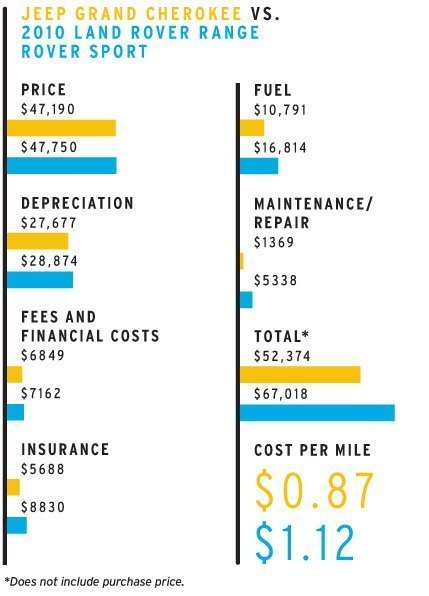
 Cost-of-ownership estimates provided by Vincentric, based on 7500 annual miles for sports cars and 12,000 for others. Residual values from Black Book.
Cost-of-ownership estimates provided by Vincentric, based on 7500 annual miles for sports cars and 12,000 for others. Residual values from Black Book.





